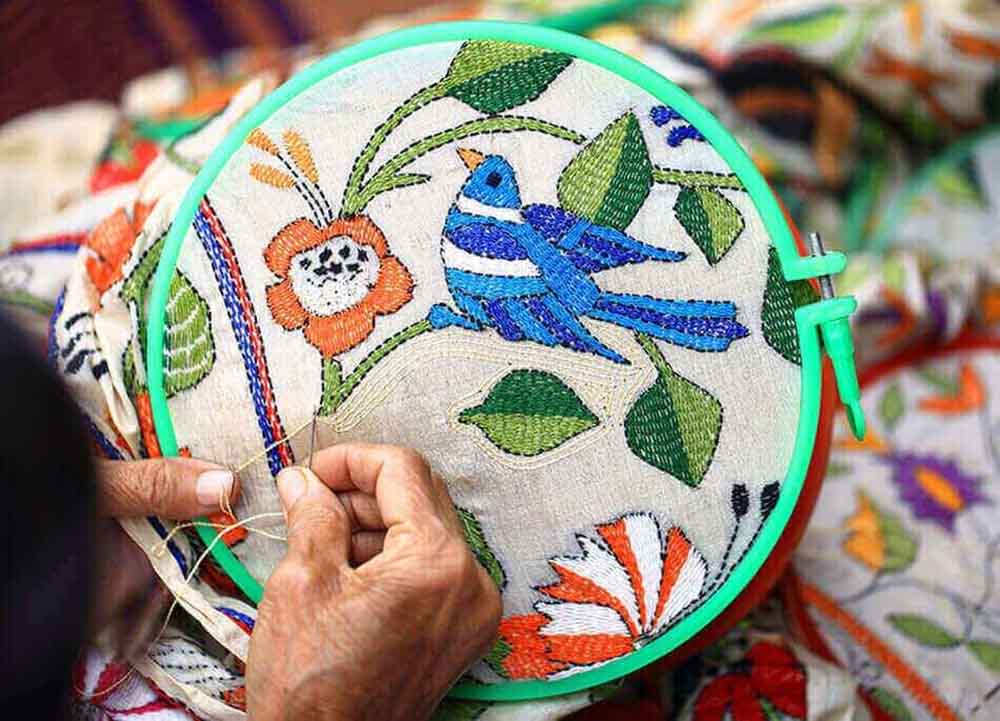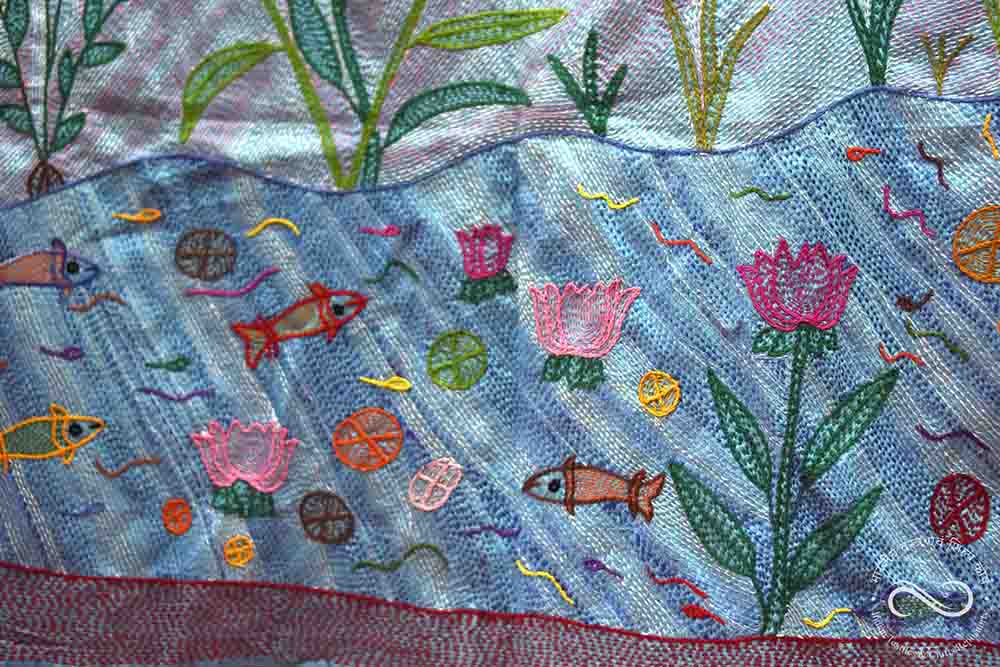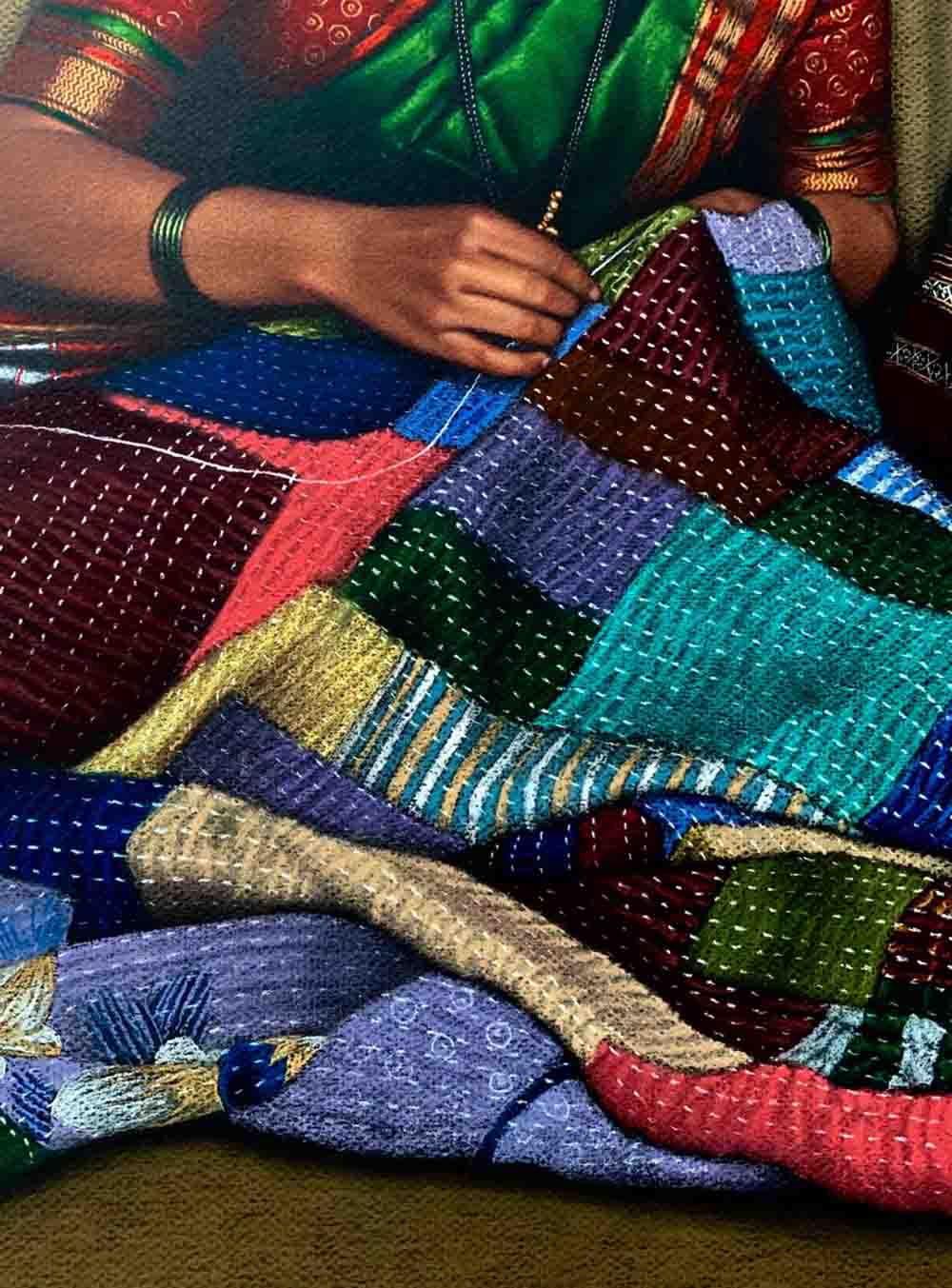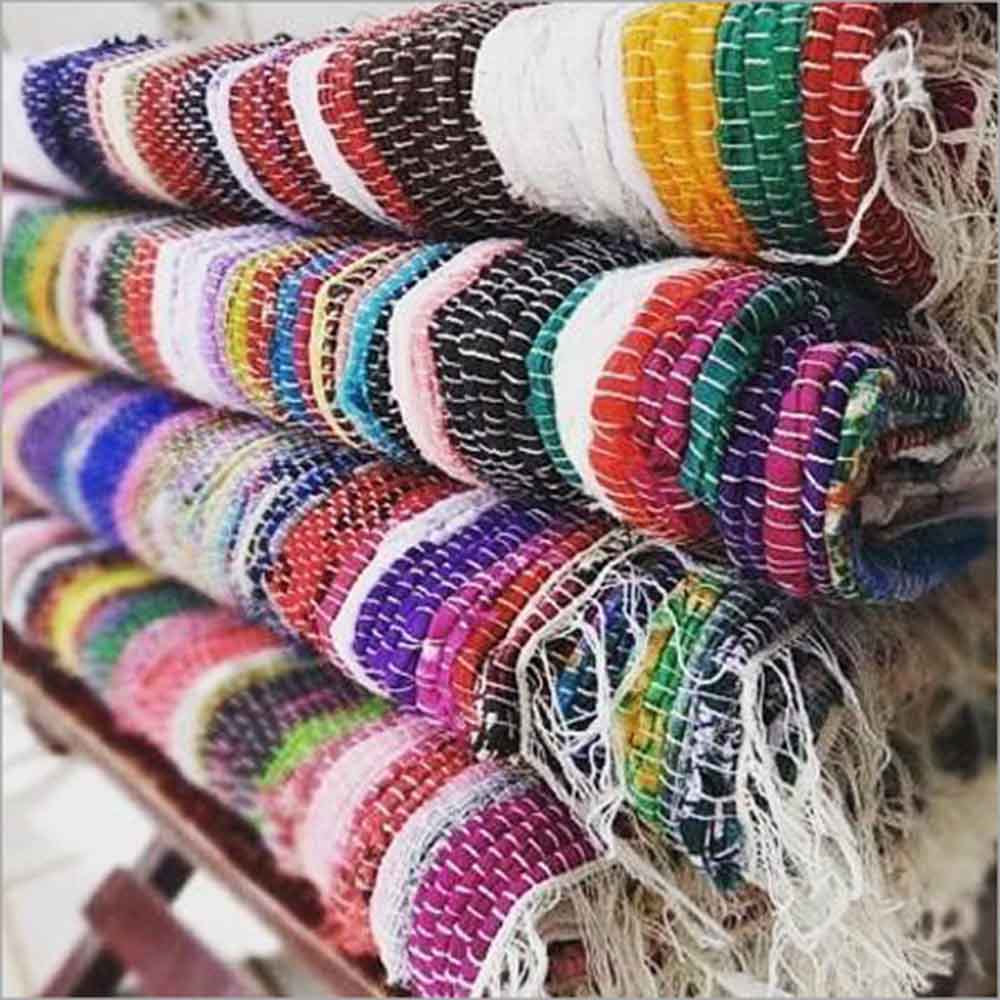Long before circular fashion entered the global textile footprint, Indian craftspeople were already practising them- quietly, beautifully, and meaningfully. Across the country, communities found ingenious ways to reuse, re-stitch, and reimagine worn-out textiles into objects of beauty and function. What began as a necessity evolved into an art form, giving rise to some of India’s most exquisite textile traditions.
Here are five crafts that embody the spirit of recycling, where old fabrics are not discarded but reborn.
1. Kantha: Bengal’s Quilted Layers of Memory
In Bengal, old saris once found new purpose as Kantha, a form of embroidery that layers worn-out cotton or silk drapes and secures them with running stitches. Women, often sitting together in courtyards, would hand-stitch these layers to create lightweight quilts, wraps, or embroidered throws. What began as a domestic practice soon evolved into a deeply expressive art form, where each piece narrates personal stories, draws on motifs from nature, and captures fragments of daily life.
Today, Kantha has found new life in contemporary fashion and home décor. Designers and artisan clusters are transforming this heritage into jackets, saris, and cushions that merge nostalgia with modernity, continuing the tradition of giving fabric a second chance.

Image Source: ruralhandmade.com
2. Sujini: Storytelling Through Stitches in Bihar
Sujini embroidery from Bihar, much like Kantha, was born out of thrift and storytelling. Women would layer old, discarded saris or dhotis and embroider over them using running and chain stitches in vivid motifs- mythological tales, village life, and dreams translated onto cloth. Traditionally made for personal use, Sujini carried both emotional and cultural narratives stitched into every thread.
In recent years, this humble upcycled textile has entered the world of contemporary design- from art panels to wearable pieces. Its raw, layered texture continues to remind us that sustainability isn’t new; it’s deeply rooted in how Indian women have always created beauty from the ordinary.

Image Source: vastrashilpakosh.in
3. Godhadi: Maharashtra’s Patchwork Heirloom
In Maharashtra, Godhadi quilts are lovingly pieced together from old cotton saris, shirts, and household textiles. Each blanket, made by rural women, combines hand-stitched patchwork and embroidery, turning scraps into heirlooms. These quilts have now become symbols of slow living and conscious design.

Image Source: spaindustrialdesign.wordpress.com
4. Chindi & Chaklo Rugs: Weaving Beauty From Waste
Before upcycling became a design trend, Gujarat’s artisans had already woven it into their daily lives. Chindi rugs, named after the Gujarati word ‘chindi’ meaning ‘cheap’ or ‘scrap’, are made by cutting old clothes and fabric waste into strips and hand-weaving them into vibrant, geometric floor coverings. Known locally as Chaklo, these rugs are a testament to rural ingenuity and frugality, transforming discarded cloth into colourful, durable home essentials. Today, they represent both tradition and a timeless model of circular design.

Image Source: tradeindia.com
5. Panja Dhurrie: Haryana’s Art of Weaving with Waste
Haryana’s handloom heritage is rich with craft traditions, and among its most intimate and widespread ones is the Panja Dhurrie. Practised in nearly every village, this weaving art was once a common pastime for women (particularly housewives) who would transform discarded fabrics into beautiful, functional floor coverings. Traditionally, the fabric used for weaving was cut into strips from old garments, cotton blends, khadi, or handspun textiles, making Panja Dhurries an early example of upcycling in Indian craft.

Image Source: Swadeshonline.com
The finished dhurries often feature bold geometric patterns, motifs of birds, and even human figures, all rendered in vibrant colours. Beyond their aesthetic charm, Panja Dhurries embody sustainability, resourcefulness, and the collective creativity of Haryana’s women, proving that beauty can be woven from what others discard.
India’s relationship with recycling is not a modern innovation. These crafts remind us that sustainability was never about marketing, but about making the most of what we had. As designers and conscious consumers return to these roots, crafts like Kantha, Sujni, Pachhedi, Godhadi, and Panja Dhurrie are finding renewed relevance and not just as heritage textiles, but as blueprints for the future of sustainable design.